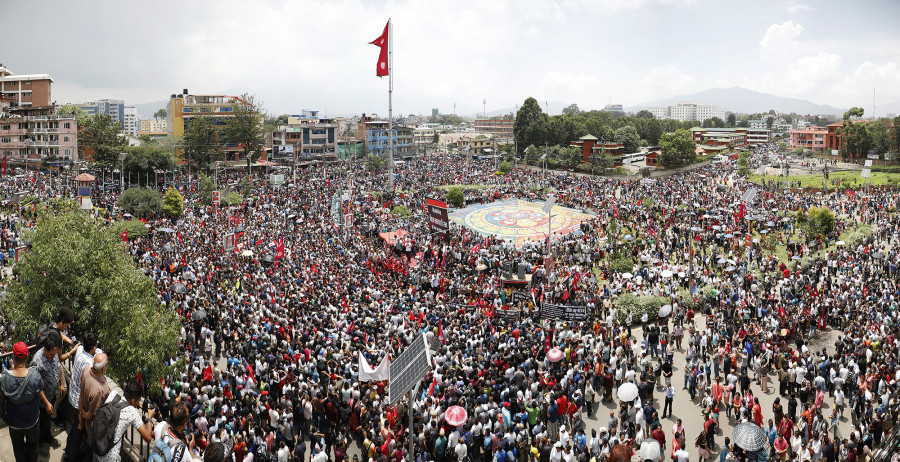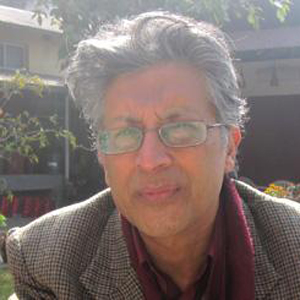Columns
Are we poised for Jana Andolan III?
The bigger the political void and uncertainty, the greater the chances for a people’s movement.
Narayan Manandhar
On December 20, the prime minister's recommendation to dissolve Parliament and hold early elections on April 30 and May 19, and blank endorsement of the same by the President set off a political whirlwind in the country. The intra-party quibbling which had been brewing within the Nepal Communist Party came to a boiling point.
It is sheer irony that a government claiming to have a two-thirds majority, elected for a five-year term and working towards 'Prosperous Nepal, Happy Nepali' had to face an unceremonious end, and that too half-way down the road, because of an intra-party feud. The unfolding of the events once again proved that the enemy within is far more dangerous than the enemy outside.
Jana Andolan I and II
In Nepal's recent political history, we have seen two rounds of people’s movements effecting a regime change. In the first round (Jana Andolan I) in the 1990s, the country switched from a near autocratic monarchy-led one-party political system to a multiparty democracy with the king as a figurehead. In the second round (Jana Andolan II) in 2006-7, the country abolished monarchy and laid the ground for a federal democratic republic.
The background or contextual materials do provide some clues to predict whether we are poised for Jana Andolan III. The first people’s movement took place at a time when the Soviet empire was crumbling and German unification was taking place; there was a kind of global movement for liberal democratic values. Internally, the Nepali people were sick and tired of nearly 30 years of the monarchy-led one-party regime called Panchayat. Much divided and disarrayed political parties, hitherto operating underground, got unified to wage a mass movement. A nearly 18-month-long blockade by India helped to fuel the political fire burning inside Nepal. King Birendra finally had no option other than to bow down to public pressure. He abolished the Panchayat system and reinstated multiparty democracy that had been illegitimately snatched away by his father in 1960.
The second people’s movement also exhibited similar backdrop information. The monarchy was greatly discredited by the notorious palace massacre in 2001. The royal coup by king Gyanendra provided a kind of rallying force for the disarrayed and disillusioned political parties to wage a unified mass movement. The signing of a 12-point agreement in New Delhi in November 2005 between the seven agitating political parties and the Maoists to launch a joint movement against the monarchy was a key turning point. Faced with losing international support, Gyanendra bowed down to the political demands. He reinstated the dissolved Parliament and it, in turn, abolished monarchy and paved the way for drafting a constitution by an elected assembly.
When the first Constituent Assembly (2008-12) failed to draft a constitution, political leaders hurriedly invited the chief justice to take over the seat of the chief executive to hold elections to the second Constituent Assembly (2013-15). Following the devastating April 2015 earthquake, donors dangled the carrot of 'relief funds' to push the ever-bickering political parties to write a new constitution in September 2015 and hold elections at the federal, provincial and local levels.
India was not happy with the new constitution and merely 'took notice' of its promulgation; as a result, the country faced another round of unofficial blockade. Madhesis, Janajatis, Dalits and other minority groups have more than enough reservations with the present constitution. The untimely dissolution of Parliament shows that either we have wasted our enormous efforts in drafting the constitution or there are fundamental flaws in it that need to be corrected.
Jana Andolan III
Prime Minister Oli’s move to dissolve Parliament is similar to king Gyanendra’s coup preceding Jana Andolan II. As long as the political parties were disunited, the king managed to keep the country. However, he lost his legitimacy once he failed to hold the promised elections; and moreover, his anti-corruption body called the Royal Commission for Corruption Control was declared unconstitutional by the Supreme Court. Similar to the recent last-minute mediation by a team of Chinese envoys, Gyanendra too failed to heed the last-minute advice of Karan Singh—a special envoy sent by India for a negotiated settlement.
Regime change is the core feature of the people’s movements. If the dissolved Parliament is not reinstated and if the government fails to hold elections in April-May; and street demonstrations are not quelled, it will not be difficult to predict another round of people’s movement. Interestingly, the months of March-April-May have shown to be conducive months for political agitations in Nepal.
The external environment is also favourable for such a movement. With a global pandemic situation and the economy in tatters, dwindling foreign aid and cooling of relationships with the neighbouring countries, public apathy and frustration at the political parties and their senile, sick and mean leaders have reached a boiling point. People are tired of unsubstantiated airy promises. Talk is already in the air about a joint political and civil agitation against the untimely dissolution of Parliament. So far, the major political parties, with their inflated egos, have been waging public demonstrations on their own. They still have to find a rallying force.
A caretaker government, promising to hold elections in the coming four months, has been keeping busy appointing henchmen in the constitutional bodies, expanding the Cabinet and reshuffling members, and wasting time performing near stand-up comedies. Except for Prime Minister Oli and his team, no one is sure there will be elections in April-May. Even if all parties agree to go for elections, they have to wait for the Supreme Court to rule on Parliament's dissolution and the Election Commission to decide which of the two cantankerous factions of the Nepal Communist Party is the legitimate one.
There are hosts of technical, financial and human resource constraints related to managing the elections within four months. Already, the commission is reported to have suggested holding a single election, instead of holding it in two phases. Ironically, it may sound anti-nationalist, but without the 'green signal' from India, it is near impossible to hold elections in Nepal. Can we unilaterally close the more than 1,500-km-long open, free and unregulated border with India during the election? The bigger the political void and uncertainty, the greater the chances for a people’s movement. Amid choppy political waters, pro-monarchists and Hindu fanatics may salivate for a while with their 'raaja aau, desh bachau' slogan. But the clock is definitely not going to turn back.




 5.44°C Kathmandu
5.44°C Kathmandu















